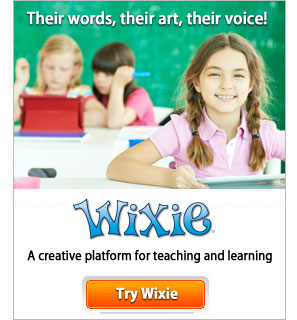Here’s to Your Health
Students will research a health issue, write an essay, and transform their argument into a public service announcement.

Task
The population needs your help. While the average life expectancy has increased in the past decades, a sedentary lifestyle, the propensity toward unhealthy foods, new infectious diseases, and other factors contribute to hundreds of thousands of preventable deaths and disabilities each year.
Using your incredible powers of persuasion and incomparable persuasive writing skills, create a multimedia public service announcement to raise awareness about an important health issue to encourage viewers to change their behavior in ways that will improve their health.
Engage
While they have undoubtedly seen and heard public service announcements before, ask students to help you identify the aspects of this type of message. If students have trouble, ask them if they have seen billboard warning about riding in a car with a driver who has been drinking or television spots where a favorite singer or actor advises against smoking, taking drugs, or joining a gang.
No matter which form they take - a print ad, a billboard, an animated video, or a television ad - public service announcements are designed to inform and persuade. They are an ideal way to connect student writing for Common Core Standards to the world outside of the classroom.
Develop an introduction to or review of techniques of persuasive writing and explore examples of argumentative essays. A famous essay students may already be familiar with is Patrick Henry’s Give Me Liberty or Give Me Death!
Create a list of health topics students will be interested in and motivated to research further. Have individual students choose an issue that is important to them. (If each issue has at least 3 students working on the same topic, it will be easy to form teams later in the process).
An argumentative essay is built around a specific statement or main premise that is debatable. Have students articulate a debatable statement that they will argue. For example: “It is important to __________” or “Your life will be better if you _______.” Their essay will provide the argument supporting the statement.
Have students research information about the health issue they have chosen. Work with them to review and implement effective note taking techniques and strategies, both with and without technology.
Once students have gathered their research, have them review and organize their materials. Facts are a great way to support a compelling argument, so have students use a fact vs. opinion organizer to determine what information in their research is fact and what is opinion.
Have students use a t-chart organizer to determine which research information supports their argument and which information contradicts it. This will help them recognize the arguments in favor of and opposed to their debatable statement.
Remind students that it is important to acknowledge opposing arguments in an essay to demonstrate that you are aware of both sides of the issue. Have students determine counter arguments that refute their debatable statement and identify information they need to successfully refute opposing arguments viewers may have.
Students should organize their information so they can write an introduction, the body of their argument, and a compelling conclusion.
Create
Once their ideas are organized, students should write a first draft of the essay, trying to get all their ideas down in logical order. Writing should include facts and details that support the argument and vivid, active language that will interest the reader.
The body of the essay should contain at least three paragraphs, so students should choose at least three ideas that support their argument and can be used to defeat arguments against their thesis. Many successful persuasive essays place the second most effective idea first and the most effective idea last. Students should use transitional phrases to help ideas flow naturally from one to the next and include facts to support their argument.
The introduction should include a hook that will get readers interested. Students may even want to frame the topic in the form of a question or begin with a story or example that will interest readers. The conclusion should restate the main idea and summarize supporting arguments. The essay should close with a powerful and motivating statement.
When the first draft is finished, each student should review their work. Ask them to read it with a critical eye towards the argument, noting where the ideas do not flow and listing comments and critiques in the margins. Students should then go back and make changes to the essay.
Next, have students share the essay with a partner and complete the same editing process they used individually. Each pair should spend face-to-face time to discuss each other's comments and make appropriate changes and edits.
Publish and present the written persuasive arguments. These make great oral presentations or articles for a school newsletter.
Now it's time to turn the written essays into multimedia public service announcements. Explore sample public service announcements such as the ones created by the Dave Thomas Foundation for Adoption or National Institute on Drug Abuse. Work as a class to identify techniques of persuasion used in the sample PSAs, asking questions like:
- Which ones make the most compelling arguments? Why?
- Which ones are the best? Why?
- What makes them effective?
Form student teams using shared topics. Have each team member read their argument to the rest of the group. Students should begin to identify the best arguments in each essay and brainstorm how they could share these ideas in a short PSA.
Most public service announcements are between 10 and 60 seconds long. Have students choose an argument they like and read it to see how much of the writing can be shared in 60 seconds. This will help them understand that they will need to think and write differently for this medium.
Have student teams choose a target audience, define a debatable statement, and begin collecting concepts from their essays and brainstorming new ideas for writing. Help teams narrow down their ideas and write a script for a PSA. Have teams develop a storyboard to identify how they will share their ideas.
When the script and storyboard are complete, students can begin collecting and creating the media resources they need. They can use the tools in Wixie to bring their PSAs to life. Have students use the drawing tools to develop illustrations or add images and photos from the media library and Pics4Learning.com. They can record narration and add background music and sound effects to set the tone. When they are finished, have each team export the project as a video they can share in a presentation or online.
Share
Have students present their work to the rest of the class. Upload student PSAs to your class or school web site. Share them during morning video announcements at your school. Reach out to organizations students used to find information and share student PSAs with them.
Approach your local access television station to learn their protocol for submitting public service announcements. See if they are willing to air student PSAs. If so, find out the details for submission and submit student work.
Assessment
There are many skills to be assessed in this project: persuasive writing, health knowledge, research, teamwork, organization, and more. Persuasion will be addressed in both the essay and the PSA. You can first assess students’ prior knowledge about persuasion as you explore sample argumentative essays. You will also be able to gauge the students’ knowledge of health issues as you brainstorm examples. Be sure to note each student’s choice of topic so you can incorporate the issues to motivate students in future tasks.
Once each student has chosen their topic, see how easily they can craft a debatable main thesis. You can read their research notes to assess how well they are able to differentiate between fact and opinion. Critical and analytical thinking can be evaluated through the fact and opinion and argument graphic organizers, their comments on their own essays, and their criticisms on classmates' writing. Their written argument can serve as a useful summative assessment, as well as formative piece you can use as they move on to developing a PSA.
Be sure to assess teamwork as students work on their PSA. Listen to comments as team members discuss their ideas, make suggestions, edit their arguments into a PSA script, and develop a storyboard. You may also want to have students keep a project journal or write daily reflections, since it will be impossible to hear every student comment during the process.
Resources
Jill Carter, Jean Wiecha, and Karen E. Peterson. Planet Health : An Interdisciplinary Curriculum for Teaching Middle School Nutrition and Physical Activity. ISBN: 0736069186
Time 4 Writing - Tips on Writing a Persuasive Essay
National Institute on Drug Abuse - PSAs
Foundation for a Tobacco Free World
Students Against Destructive Decisions
Center for Disease Control and Prevention - HIV/AIDS
Standards
Common Core Anchor Standards for English Language Arts - Grade 5-12
Writing Standards
Text Types and Purposes
1. Write arguments to support claims in an analysis of substantive topics or texts, using valid reasoning and relevant and sufficient evidence
Production and Distribution of Writing
4. Produce clear and coherent writing in which the development, organization, and style are appropriate to task, purpose, and audience.
Research to Build and Present Knowledge<
7. Conduct short as well as more sustained research projects based on focused questions, demonstrating understanding of the subject under investigation.
9. Draw evidence from literary or informational texts to support analysis, reflection, and research.
National Health Education Standards
1. Students will comprehend concepts related to health promotion and disease prevention to enhance health.
8. Students will demonstrate the ability to advocate for personal, family, and community health.
ISTE NETS for Students 2016:
3. Knowledge Constructor
Students critically curate a variety of resources using digital tools to construct knowledge, produce creative artifacts and make meaningful learning experiences for themselves and others. Students:
a. plan and employ effective research strategies to locate information and other resources for their intellectual or creative pursuits.
b. evaluate the accuracy, perspective, credibility and relevance of information, media, data or other resources.
c. curate information from digital resources using a variety of tools and methods to create collections of artifacts that demonstrate meaningful connections or conclusions.
d. build knowledge by actively exploring real-world issues and problems, developing ideas and theories and pursuing answers and solutions.
6. Creative Communicator
Students communicate clearly and express themselves creatively for a variety of purposes using the platforms, tools, styles, formats and digital media appropriate to their goals. Students:
a. choose the appropriate platforms and tools for meeting the desired objectives of their creation or communication.
b. create original works or responsibly repurpose or remix digital resources into new creations.
c. communicate complex ideas clearly and effectively by creating or using a variety of digital objects such as visualizations, models or simulations.
d. publish or present content that customizes the message and medium for their intended audiences.












